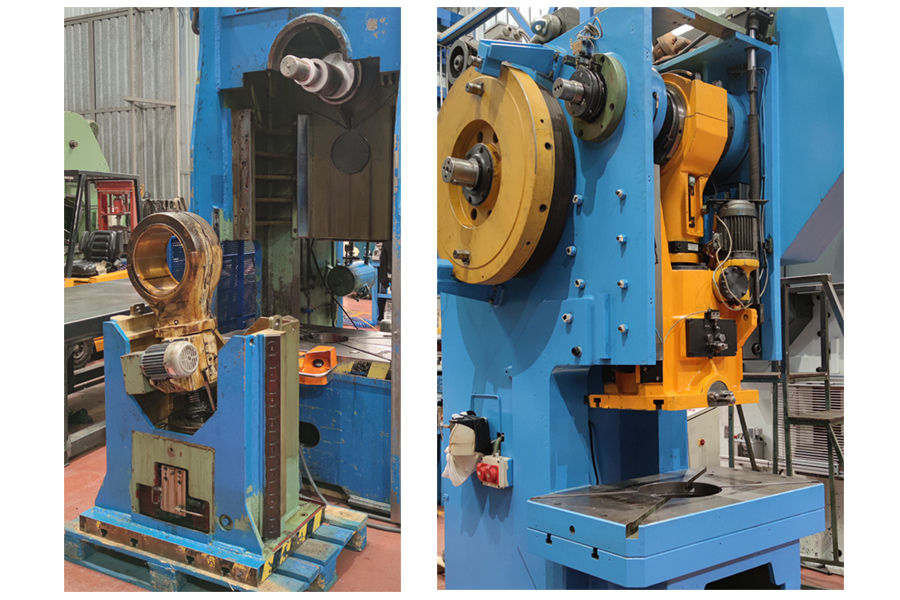Our passion is presses for stamping or drawing in general, but we have a special weakness for mechanical presses. Our team of technical specialists is largely formed by mechanical engineers, hence our extensive experience in the field of repair and rebuilding are in part to everything related to mechanical presses of any brand, model, type and dimensions.
In this “blog” we will make a brief introduction of what is the main operation of a mechanical press, as well as the parts that form the kinematic assembly of a mechanical press eccentric gooseneck or also known as mechanical presses with “C” shaped frame, mechanical presses stirrup or mechanical presses neckline.
Recent works. Delteco PE-160 mechanical press and FAGOR ARRASATE TACI 125to mechanical press.
Our passion is presses for stamping or drawing in general, but we have a special weakness for mechanical presses. Our team of technical specialists is largely formed by mechanical engineers, hence our extensive experience in the field of repair and rebuilding are in part to everything related to mechanical presses of any brand, model, type and dimensions.
In this “blog” we will make a brief introduction of what is the main operation of a mechanical press, as well as the parts that form the kinematic assembly of a mechanical press eccentric gooseneck or also known as mechanical presses with “C” shaped frame, mechanical presses stirrup or mechanical presses neckline.
Recent works. Delteco PE-160 mechanical press and FAGOR ARRASATE TACI 125to mechanical press.
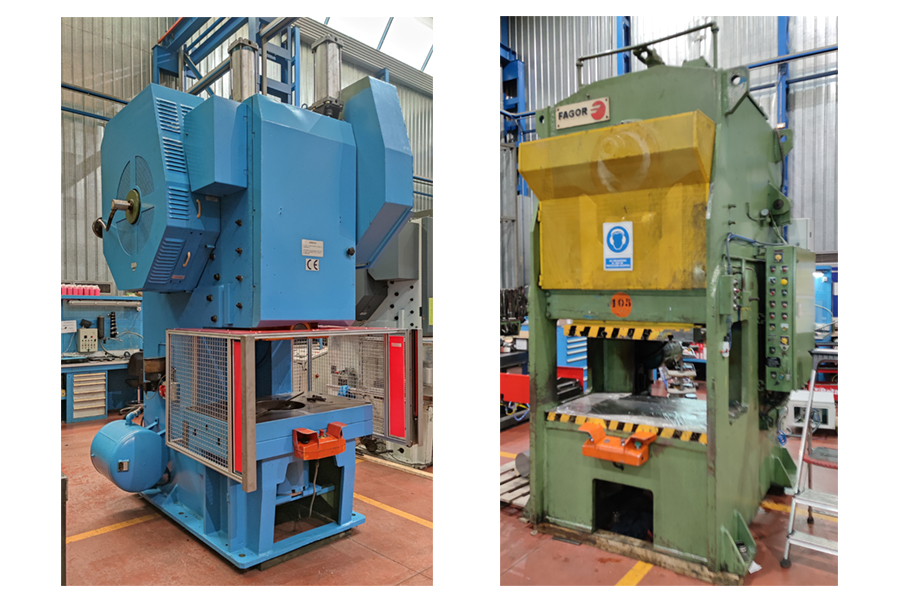
This type of mechanical presses are used in a multitude of companies directly or indirectly dedicated to production. Their great versatility makes them ideal for carrying out an infinite number of jobs, from the most basic, incorporating simple tools or jigs into the mechanical press, to the most complex using high-tech dies or molds.
Contact us for mechanical press repairs or rebuilds by clicking here
What are the main parts of a mechanical press?
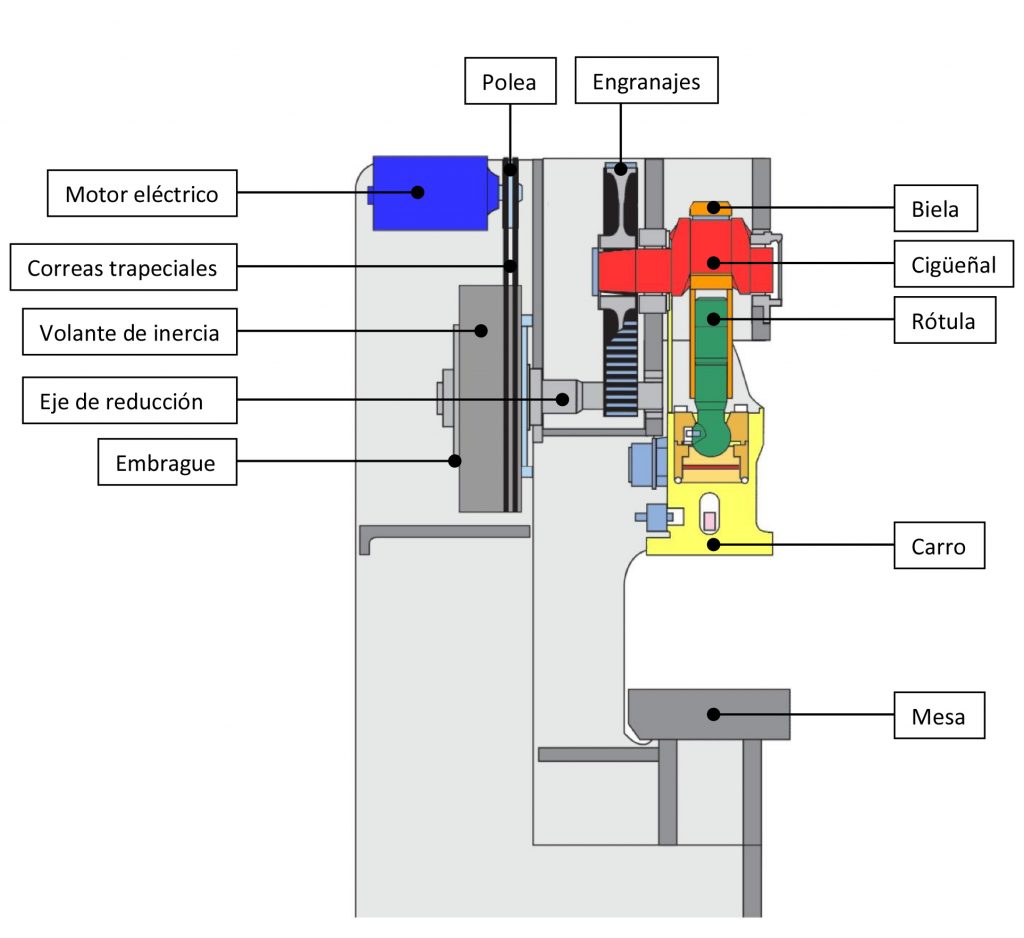
How does a mechanical press work?
The beginning of all movement, the electric motor
The electric motor is essential for all machines, including mechanical presses, to start their work. An electric motor is a machine capable of transforming electrical energy, by means of the action of the magnetic fields generated by its coils composed of a rotor and a stator, into mechanical rotational energy.
Depending on the capacity of the mechanical press, the electric motor must be smaller or larger, i.e., the more energy the mechanical press needs to generate, the larger the motor must be.
The pulley, the drive belts and the flywheel
The rotary mechanical energy of the electric motor rotates the pulley on its own axis, and this pulley contains V-belts that transmit this movement to a large flywheel. This element transforms the rotating mechanical energy of the main motor, through the accumulation of energy generated by its own movement, into kinetic energy.
V-belts have been used for this example, although flat belts with rectangular cross section or multitrack or grooved belts can be used on mechanical eccentric presses. It will depend on the shape of the pulley housing and the geometry of the flywheel….
Examples of flywheel position on front crankshaft mechanical press (left) and transverse crankshaft mechanical press (right)
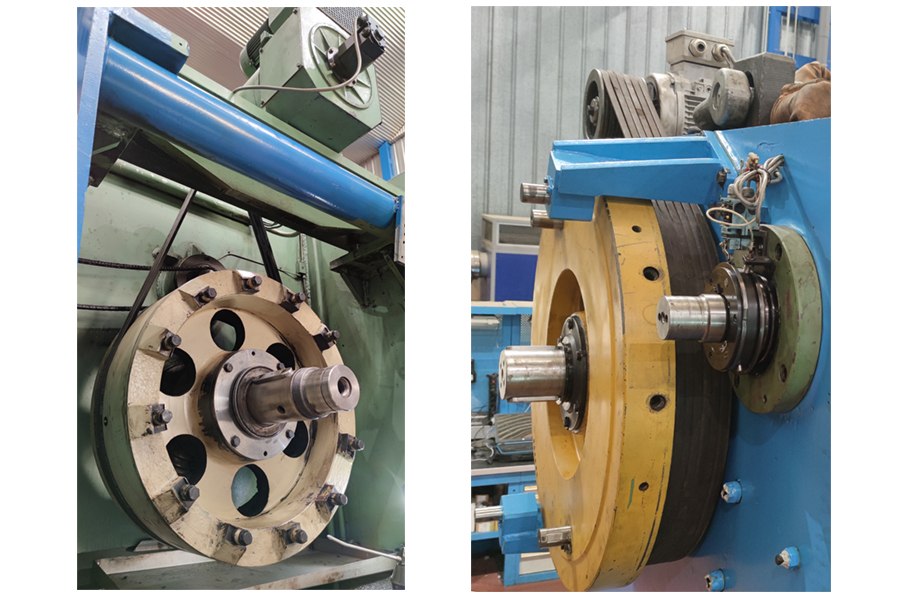
Clutch/brake and reduction shaft
When the flywheel has the kinetic energy to work, the clutch located on the flywheel shaft is pneumatically actuated. This process will lock the flywheel which will transmit through the same shaft the rotational motion of the flywheel to a toothed pinion. This sprocket in turn will transmit its kinetic energy to a larger sprocket.
As a result, the high rotational speed of the flywheel will be considerably reduced by these smaller and larger gears, obtaining the same kinetic energy but with a much lower speed.
The shaft where the flywheel is located at one end and a toothed pinion at the other end is known as the “reduction shaft”.
Reduction shafts are not found in all presses; in fast mechanical presses, the flywheel has an eccentric crankshaft as its axis, thus achieving a higher number of strokes per minute.
Examples of clutch position of a mechanical press and gearwheels or reduction shaft gears in a 160to mechanical press.
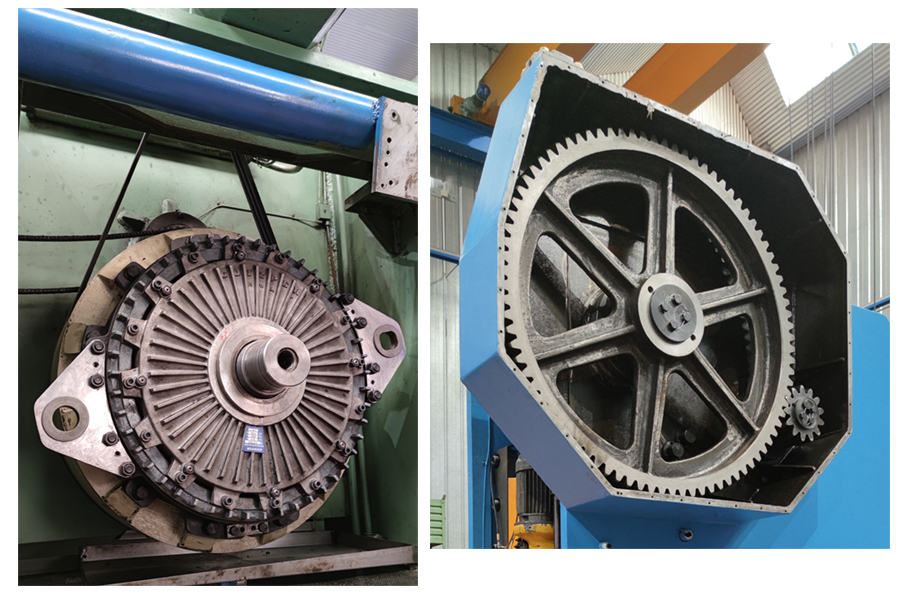
Specialists in clutch repair of all types of mechanical presses
Crankshaft, connecting rod and ball joint
The shaft of the larger sprocket is formed by an eccentric shaft or also called crankshaft, therefore, the rotary motion of this larger wheel/gear is transmitted directly to the crankshaft of the mechanical press.
In the eccentric part of this crankshaft is housed a connecting rod, which is responsible for converting the rotary motion of the shaft to linear motion, always preserving its kinetic properties.
In the lower part of this connecting rod is the element called ball joint. At one end of this element is the threaded part, which will be threaded to the connecting rod, and at the other end a spherical shape also called “the ball” which will be attached to the carriage of the mechanical press.
Examples of the repair of a connecting rod and ball joint assembly (one of them split)
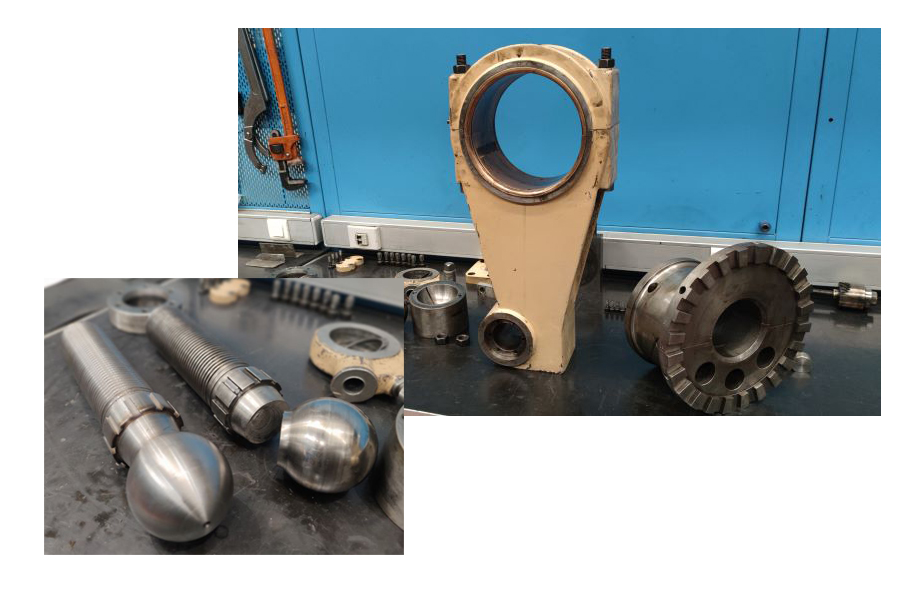
Examples of mechanical presses left with crankshaft in front position and right with crankshaft in transverse position
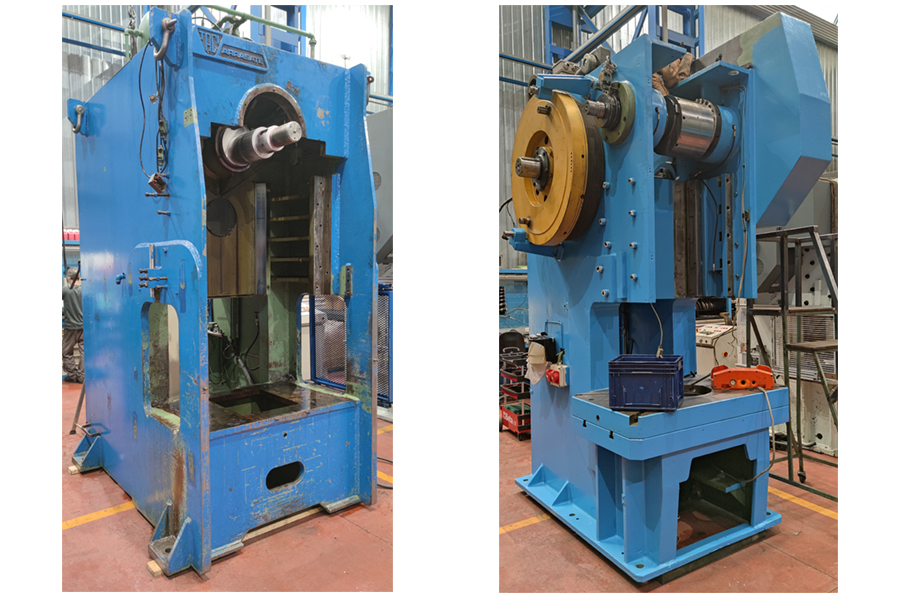
The mechanical press ram
It is the most outstanding part of an eccentric mechanical press, it is the one that will transmit the tons or KN of power to the upper part of the mold or die that will form the part.
The Ram only has linear movement from top to bottom and it will be guided by means of elements called “guides”, in the upper part will be housed the spherical part of the ball and socket joint and in the lower flat part it usually has machined slots in the form of “T”, which serve to be able to tie the upper part of a mold or matrix.
Examples of different types of eccentric mechanical press rams
